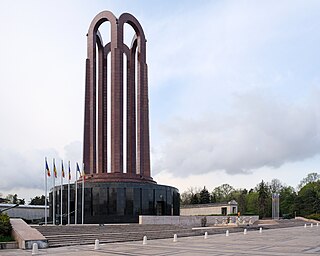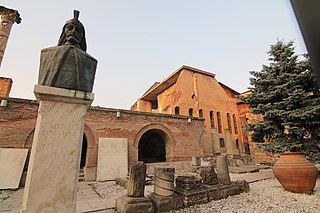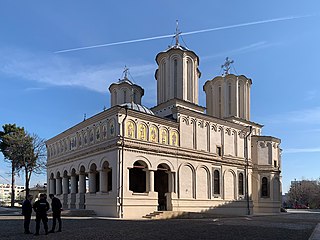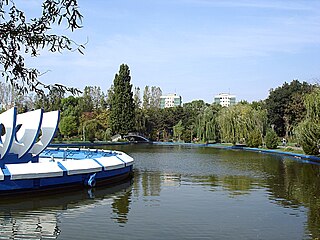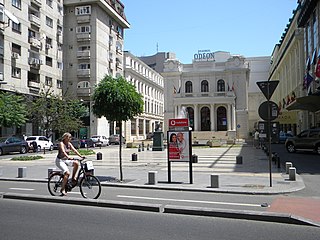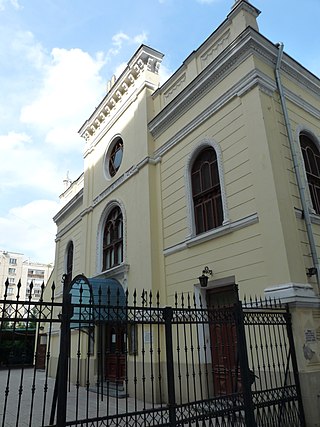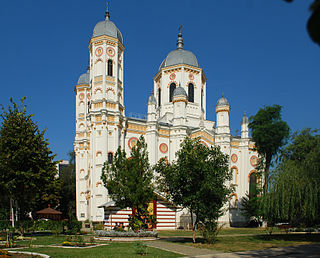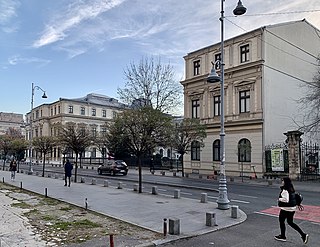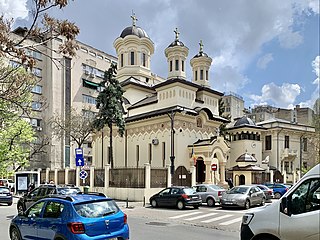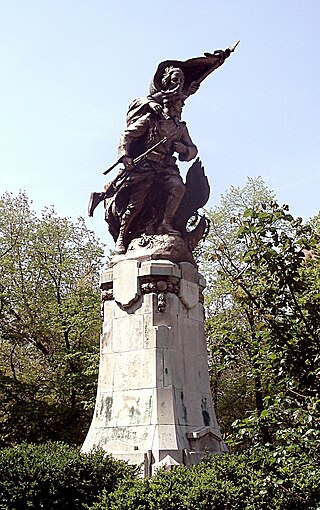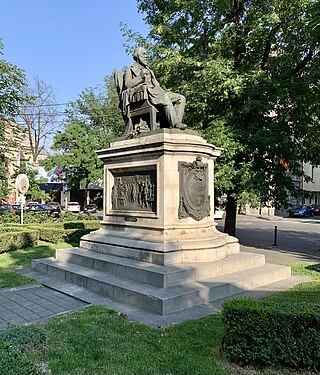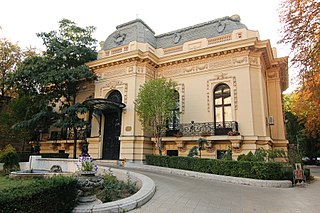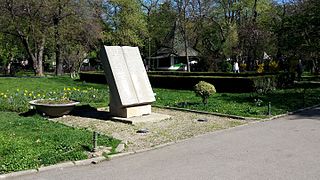76 Sights in Bucharest, Romania (with Map and Images)
Legend
Premium Sights
Book tickets, guided tours and activities in Bucharest.
Guided Free Walking Tours
Book free guided walking tours in Bucharest.
Welcome to your journey through the most beautiful sights in Bucharest, Romania! Whether you want to discover the city's historical treasures or experience its modern highlights, you'll find everything your heart desires here. Be inspired by our selection and plan your unforgettable adventure in Bucharest. Dive into the diversity of this fascinating city and discover everything it has to offer.
Sightseeing Tours in BucharestActivities in Bucharest
Grădina Icoanei is a small park in central Bucharest, situated not far away from Piața Romană and Bulevardul Magheru. The park, located next to Gheorghe Cantacuzino Plaza in Sector 2 of the city, was inaugurated in 1873.
Sala Palatului in Bucharest, Romania is a conference centre and concert hall immediately behind the National Museum of Art of Romania, the former royal palace in the heart of the city. It was built between 1959 and 1960, during the communist era, as part of an architectural ensemble that includes 9 other buildings, called Piața Sălii Palatului. Over time, it has hosted various conferences such as the United Nations Economic Commission for Europe, World Population Conference, World Energy Congress, or the World Congress of the Red Cross.
3. Romanian Atheneum
The Romanian Athenaeum is a concert hall in the center of Bucharest, Romania, and a landmark of the Romanian capital city. Opened in 1888, the ornate, domed, circular building is the city's most prestigious concert hall and home of the "George Enescu" Philharmonic and of the George Enescu Festival.
4. Royal Palace
The Royal Palace of Bucharest, known as Palace of the Republic between 1948 and 1990, is a monumental building situated in the capital of Romania, on Calea Victoriei. The palace in its various incarnations served as official residence for the kings of Romania until 1947, when the communist regime was installed after Michael I of Romania's forced abdication. Since 1950, the palace hosts the National Museum of Art of Romania. The Romanian royal family currently uses Elisabeta Palace as its official residence in Bucharest. In addition, the Romanian government allows the royal family to use the Royal Palace different occasions.
5. Politehnica University of Bucharest

Politehnica University of Bucharest is a technical university in Bucharest, Romania founded in 1818. Politehnica University is classified by the Ministry of Education as an advanced research and education university.
6. National Museum of Art of Romania

The National Museum of Art of Romania is located in the Royal Palace in Revolution Square, central Bucharest. It features collections of medieval and modern Romanian art, as well as the international collection assembled by the Romanian royal family.
7. Triumphal Arch
Arcul de Triumf is a triumphal arch located on the Kiseleff Road, in the northern part of Bucharest, Romania. The monument, designed by Petre Antonescu, was built in 1921–22, renovated in 1935–36, and renovated again starting in 2014. It commemorates Romania's victory in the First World War and the coronation of King Ferdinand I and his wife Marie.
8. Cișmigiu Gardens
The Cișmigiu Gardens or Cișmigiu Park are a public park in the center of Bucharest, Romania, spanning areas on all sides of an artificial lake. The gardens' creation was an important moment in the history of Bucharest. They form the oldest and, at 14.6 hectares, the largest park in city's central area.
9. Carol Park
Carol I Park is a public park in Bucharest, Romania, named after King Carol I of Romania. A French garden located in the southern-central area of Bucharest, partly on Filaret Hill, originally capable of hosting various exhibitions, it suffered considerable modifications during the communist regime, including a name change to Parcul Libertății.
10. Biserica Mănăstirii Stavropoleos
Stavropoleos Monastery, also known as Stavropoleos Church during the last century when the monastery was dissolved, is an Eastern Orthodox monastery for nuns in central Bucharest, Romania. Its church is built in Brâncovenesc style. The patrons of the church are St. Archangels Michael and Gabriel. The name Stavropoleos is the genitive case of Stavropolis. One of the monastery's constant interests is Byzantine music, expressed through its choir and the largest collection of Byzantine music books in Romania.
11. The Jewish Theatre
Teatrul Evreiesc de Stat in Bucharest, Romania is a theater specializing in Jewish-related plays. It is the oldest Yiddish-language theater with uninterrupted activity in the world. Its contemporary repertoire includes plays by Jewish authors, plays on Jewish topics, and plays in Yiddish. Many of the plays also feature Jewish actors.
12. Palatul Elisabeta
Elisabeta Palace is a palace on Kiseleff Road in Bucharest, Romania. Built in 1936, it is the official residence in Romania of Margareta of Romania, her husband Prince Radu, and her sister Princess Maria.
13. Memorial of Rebirth
The Memorial of Rebirth is a memorial in Bucharest, Romania that commemorates the struggles and victims of the Romanian Revolution of 1989, which overthrew Communism. The memorial complex was inaugurated in August 2005 in Revolution Square, where Romania's Communist-era dictator, Nicolae Ceaușescu, was publicly overthrown in December 1989.
14. The Old Court Princely Palace
Curtea Veche was built as a palace or residence during the rule of Vlad III Dracula in 1459. Archaeological excavations started in 1953, and now the site is operated by the Muzeul Municipiului București in the historic centre of Bucharest, Romania.
15. National Museum of the Romanian Peasant
The National Museum of the Romanian Peasant is a museum in Bucharest, Romania, with a collection of textiles, icons, ceramics, and other artifacts of Romanian peasant life. One of Europe's leading museums of popular arts and traditions, it was designated "European Museum of the Year" for 1996.
16. Carol Park Mausoleum
The Mausoleum in Carol Park, called during the communist regime the Monument of the Heroes of the Struggle for the Freedom of the People and the Fatherland, for Socialism, is a monument located in Carol I Park, sector 4 of Bucharest, on the Filaret Hill.
17. Piața Unirii
Piața Unirii is the largest square in central Bucharest, Romania, and one of the largest public spaces in Europe, being located in the center of the capital where Sectors 1, 2, 3, and 4 meet. Part of the Civic Centre, it is bisected by Unirii Boulevard, originally built during the Communist era as the Boulevard of the Victory of Socialism, and renamed after the Romanian Revolution of 1989.
18. Dimitrie Gusti National Village Museum
The Village Museum or formally National Museum of the Village "Dimitrie Gusti" is an open-air ethnographic museum located in the King Michael I Park, Bucharest, Romania. The museum showcases traditional Romanian village life. The museum extends to over 100,000 m2, and contains 123 authentic peasant settlements, 363 monuments and over 50,000 artefacts from around Romania. Structures in the museum ranged from the 17th to the 20th century, representative of different ethnographic regions including Banat, Transylvania, Moldavia, Maramures, Oltenia, Dobrogea, Muntenia.
Wikipedia: Dimitrie Gusti National Village Museum (EN), Website
19. Antim Monastery
The Antim Monastery is a Romanian Orthodox church located in Bucharest, Romania on Mitropolit Antim Ivireanu Street, no. 29. It was built between 1713 and 1715 by Saint Antim Ivireanu, at that time a Metropolitan Bishop of Wallachia. The buildings were restored by Patriarch Justinian Marina in the 1960s. As of 2005, there were 7 monks living in the Monastery. The monastery also hosts a museum with religious objects and facts about the life of Antim Ivireanu.
20. Templul Coral
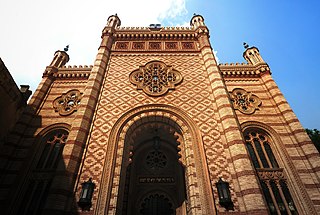
The Choral Temple is a Orthodox Jewish congregation and synagogue, located at 9-11 Sf. Vineri Street, in Bucharest, Romania. Designed in the Moorish Revival style, the synagogue was completed in 1866.
21. Catedrala Patriarhală Sfinții Împărați Constantin și Elena
The Romanian Orthodox Patriarchal Cathedral is a functioning religious and civic landmark, on Dealul Mitropoliei, in Bucharest, Romania. It is located near the Palace of the Chamber of Deputies of the Patriarchate of the Romanian Orthodox Church. Since it is a working cathedral, it is the site of many religious holidays and observances that take place for those who follow the Orthodox Christian faith in Bucharest, including a Palm Sunday pilgrimage. The Orthodox Divine Liturgy at the cathedral is known for its a cappella choir, a common practice shared by all the Orthodox churches, in both their prayer services and liturgical rites. The Romanian Orthodox Patriarchal Cathedral is a designated Historical monument—Monument istoric of Romania.
22. Biserica Sfântul Nicolae - Ghica

St. Nicholas Russian Church is located in central Bucharest, Romania, just off University Square. Russian Ambassador Mikhail Nikolaevich Giers initiated the building of a Russian Orthodox church in central Bucharest in 1905. It was meant mainly for the use of the legation employees, as well as for Russians living in the capital city of the Kingdom of Romania.
23. Monumentul Eroilor Aerului
The Monument to the Heroes of the Air, located in the Aviators' Square, on Aviators' Boulevard, Bucharest, Romania, was built between 1930 and 1935 by sculptors Lidia Kotzebue (1885–1944), and by Iosif Fekete. The structure, 20 m (65.6 ft) high, is made up of bronze sculptures resting on an obelisk-shaped stone pedestal, which in turn stands atop four trapezoidal prisms linked to each other by arcs. Beneath this entire complex is a circular stone base.
24. Grigore Antipa Natural History National Museum
The Grigore Antipa National Museum of Natural History is a natural history museum, located in Bucharest, Romania. It was originally established as the National Museum of Natural History on 3 November 1834. It was renamed in 1933 after Grigore Antipa, who administered the museum for 51 years. He is the scientist who reorganized the museum in the new building, designed by the architect Grigore Cerchez and inaugurated by Carol I of Romania in 1908. It was reopened in 2011 after a $14 million renovation. The museum’s collection consists of over 2 million specimens. It is regarded as one of the most prestigious and well organized natural history museums in the world.
Wikipedia: Grigore Antipa National Museum of Natural History (EN), Website
25. Parcul Drumul Taberei
Drumul Taberei Park is a park located in Sector 6 of Bucharest, being the largest in the Drumul Taberei neighborhood. It is located in the area bordered by Brașov Street to the east, Drumul Taberei Boulevard to the south and north and Târgu Neamț Street to the west, with an area of 30 hectares.
26. Kretzulescu Palace
Crețulescu Palace is a historic building near the Cișmigiu Gardens on Știrbei Vodă Street nr. 39, in Bucharest, Romania. It was built for the Crețulescu family in 1902–1904 by Romanian architect Petre Antonescu (1873–1965).
27. Biserica Ortodoxă Crețulescu
Kretzulescu Church is an Eastern Orthodox church in central Bucharest, Romania. Built in the Brâncovenesc style, it is located on Calea Victoriei, nr. 45A, at one of the corners of Revolution Square, next to the former Royal Palace.
28. Cathedral of Saint Basil the Great

Saint Basil the Great Cathedral, located at 50 Polonă street, is the first Romanian Greek-Catholic church built in Bucharest. The church's patron is Basil of Caesarea and its dedication celebration is on January 1.
29. Dealul Mitropoliei
Dealul Mitropoliei, also called Dealul Patriarhiei, is a small hill in Bucharest, Romania and an important historic, cultural, architectural, religious and touristic point in the national capital. From a religious point of view, it is one of the centres of Romanian Orthodoxy: the headquarters of the Romanian Patriarchate and the residence of the Patriarch are both located here.
30. Catedrala romano-catolică Sfântul Iosif
Saint Joseph Cathedral is a historical and architectural monument located in Bucharest, Romania, at 19 General Berthelot Street. It is the main place of worship which serves as cathedral of the Roman Catholic Archdiocese of Bucharest.
31. Palatul Nunțiaturii Apostolice a Sfântului Scaun din București
The Palace of the Apostolic Nunciature of the Holy See in Bucharest, inaugurated in 1901, is located on Pictor Constantin Stahi Street no. 5-7 and is the seat of the Apostolic Nunciature in Romania. The building is registered in the List of Historical Monuments in Bucharest, sector 1, under the code LMI B-II-m-A-19725.
Wikipedia: Palatul Nunțiaturii Apostolice a Sfântului Scaun din București (RO)
32. Odeon Teathre
The Odeon Theatre is a theatre in Bucharest, Romania, located on Calea Victoriei, and is one of the best-known performing arts venues in Bucharest. As an institution, it descends from the Teatrul Muncitoresc CFR Giulești, founded 1946; it moved to its current location, the Sala Majestic, in 1974. In 1990, after the Romanian Revolution of 1989, the theatre changed its name from Giulești to Odeon. In 1993, it won the Romanian Theatre of the Year Award.
33. Great Synagogue
The Great Synagogue, also known as the Great Polish Synagogue, is a Jewish congregation and synagogue, located at 11 Vasile Adamache, in the Old Jewish District of Bucharest, Romania. The synagogue was completed in 1847 by the Polish-Jewish community. The building is also used as a Jewish museum.
34. Biserica Ortodoxă „Sfântul Spiridon Nou”
The Saint Spyridon the New Church is a Romanian Orthodox church in Bucharest, Romania on Calea Șerban Vodă, no. 29. Originally built with gothic influences in 1852–1858, it was strongly modified by Patriarch Justinian.
35. Primăria Municipiului București
The Palace of the Ministry of Public Works is a building in Bucharest, built between 1906 and 1910, in the traditional Neo-Romanian style, according to the plans of the architect Petre Antonescu, on the vacant land located opposite the Cismigiu Garden, called "Duca's Maidan".
36. Teatrul Bulandra

The Bulandra Theatre in Bucharest, Romania was founded in 1947 as Teatrul Municipal; its first director was Lucia Sturdza-Bulandra, one of the leading Romanian stage actresses of her generation. Liviu Ciulei was director between 1963 and 1972; one of the most important directors since then was Ștefan Iordănescu (1999–2002), who restructured the theatre management. From 2002 until his death in 2019, the theatre was directed by Alexandru Darie; as of 2020, the director is Vlad Zamfirescu.
37. Arhivele Naționale
The National Archives of Romania, until 1996 the State Archives, are the national archives of Romania, headquartered in Bucharest. It is subordinate to the Ministry of Internal Affairs. There are 42 regional branches, one in each county of Romania and one in Bucharest.
38. Mănăstirea Ortodoxă „Chiajna - Giulești”
Chiajna Monastery is the name of a ruined church situated on the outskirts of Bucharest, Romania which is the subject of many legends, including the story that it is cursed. The information centre, Giulești Park, is devoted to the upkeep and protection of the building, which is a national heritage site.
39. Art Collections Museum
The Museum of Art Collections is a branch of the National Museum of Art of Romania and is situated in Bucharest. It is located on Calea Victoriei no.111 at the corner of Calea Griviței, in Romanit Palace, the first section of which was built in 1822.
40. Parcul Circului
The State Circus Park is a park in Bucharest, Sector 2, inside which is located the State Circus of Bucharest. The park was arranged in 1961, on an area of 26 ha, according to the plans of the architect Valentin Donose.
41. Yeshua Tova Synagogue
The Yeshua Tova Synagogue, also known as the Podul Mogoşoaiei Synagogue, is an Hasidic Jewish congregation and synagogue, located at 9 Tache Ionescu Street, near Piaţa Amzei and Piața Romană metro station, in Bucharest, Romania. Designed in the Moorish Revival style, the synagogue was completed in 1827, and is the city's oldest synagogue.
42. Theodor Pallady Museum
The Theodor Pallady Museum is a museum located at 22 Spătarului Street in Bucharest, Romania. Situated in one of the oldest surviving merchant houses in the city, it includes many works by the well-known Romanian painter Theodor Pallady, as well as a number of European and Oriental furniture pieces. Built in the second half of the 18th century, the house is named after its most illustrious owner, Iacob Melic.
43. Ion Luca Caragiale
A statue of Ion Luca Caragiale, sculpted by Constantin Baraschi, is located on Maria Rosetti Street in central Bucharest, Romania. It is placed in front of the house where the dramatist and short story writer Ion Luca Caragiale once lived.
44. Mănăstirea Mihai Vodă
The Mihai Vodă Monastery, founded by Mihai Viteazul, is one of the oldest buildings in Bucharest. It was built in 1591, surrounded by stone walls, similar to a fortress. The monastery buildings served multiple purposes over time such as residence of the country's leaders, military hospital, medical school and the site of the National Archives of Romania. The monastery was an important archeological site; inside the monastery yard used to be a Dacian archeological site, more than 3000 years old, where old pottery and other relics were found.
45. Bucharest Zoo
Zoo Băneasa is a zoo in Bucharest, Romania, located in a northern district of the city, called Băneasa. The park was founded in 1955 as a service of the Municipal Household Section of the People's Council of the Capital.
46. Maria and Dr. George Severeanu Collection
The George Severeanu Museum is a museum and historical monument in Bucharest, on Henri Coandă Street no. 26, sector 1, in a house dating back to around 1860. The museum is housed in the house that belonged to radiologist George Severeanu and his wife, Maria. The museum exhibits the numismatic and antiquities collection of the Severeanu spouses, which includes prehistoric, ancient Egyptian artifacts, Greek and Etruscan vessels, Tanagra statuettes, Roman glassware and jewelry, İznik ceramics, medieval documents, many coins (numismatics), and others.
47. National Geological Museum
The National Geological Museum is located on Şoseaua Kiseleff (street), in Bucharest, Romania. It is located near Victory Square and Kiseleff Park, in central Bucharest. The museum was founded in 1892 and was re-established in 1990.
48. Prof. Eng. Dimitrie Leonida National Technological Museum
The Dimitrie Leonida Technical Museum was founded in 1909 by Dimitrie Leonida, inspired by the München Technical Museum, he had visited during his studies in Charlottenburg Polytechnic Institute. In 1908, with the help of the first promotions of mechanics and electricians from his school, the first in Romania, Leonida collected the first objects for the museum. What is different in the Leonida museum was the educational orientation of the museum and also the interactivity.
49. Biserica Mărcuța
Mărcuța Church is a Romanian Orthodox church in Bucharest, Romania on the east side of the Pantelimon district. Built in 1587, it is one of the oldest structures still in use today in Romania. In the past the church served the Mărcuța Monastery which was situated on the outskirts of the city.
50. Palatul Romanit
The Romanit Palace, the headquarters of the Museum of Art Collections, located on Calea Victoriei at number 111, is a representative building of Bucharest in the nineteenth century, erected by the boyar C. Faca, at the corner formed by Calea Victoriei and Calea Griviței.
51. Teatrul de vară Alhambra
The Capitol Summer Theater in Bucharest was built at the beginning of the twentieth century (1916) according to the plans of the architect Nicolae Nenciulescu. Originally called the "Alhambra Summer Theatre", it is classified as a historical monument.
52. Biserica Sfântul Gheorghe - Nou
New St. George Church is a Romanian Orthodox church located in Bucharest, Romania, along the city center's main north–south thoroughfare, where it intersects the Lipscani area. It is dedicated to Saint George. The church is associated with Constantin Brâncoveanu: it was built during his reign and he is buried inside.
53. Ministerul Agriculturii și Dezvoltării Rurale
The Palace of the Ministry of Agriculture and Domains is a building in Bucharest, built in 1895 according to the plans of the architect Louis Pierre Blanc. The edifice has housed the relevant ministry from the beginning until now.
54. Biserica Ortodoxă Boteanu-Ienii
Boteanu Church is an Orthodox church in Bucharest, sector 1. At this Church there is a part of the relics of St. John Jacob. The history of the church stretches back to 1682, when a lord named Mihul built a church dedicated to the "Cutting of the Head of Saint John the Baptist". The church is better known as "Bradu-Boteanu", because a tall fir tree grew next to the church and because the church was next to a slum called "Boteanului".
55. Avântul Țării
The Momentum of the Country Monument in Bucharest was made by the sculptor Emil Wilhelm Becker together with the architect Arghir Culina and inaugurated in 1921 on Calea Griviței, in the immediate vicinity of some military establishments, and after a while it was moved to Valter Mărăcineanu Square, in front of the then building of the Ministry of War, near the Cișmigiu Garden, where it is still found today.
56. Capela Elisabeta Doamna
The Saint Elisabeth Chapel was founded by Queen Elisabeth who laid the foundation stone on April 24, 1870, inside the Elena Doamna Orphan Children's Asylum built by Elena Cuza based on the document signed on July 18, 1862 by her husband, Prince Alexandru Ioan Cuza.
57. National Museum of Maps and Rare Books
The National Museum of Maps and Old Books is a national museum in Bucharest, located in Str. Londra nr. 39, sector 1, established on April 4, 2003. Dana and Adrian Năstase contributed significantly to the creation of the map collection by donating hundreds of maps from their personal collection.
Wikipedia: Muzeul Național al Hărților și Cărții Vechi (RO), Website
58. Biserica Sfântul Dumitru - Slobozia

Slobozia Church, dedicated to the Great Martyr St. Demetrius, is a Romanian Orthodox church in Bucharest's Sector 4, located at the intersection of Dimitrie Cantemir and Marășești Boulevards. Built by Radu Leon, its ctitor, between 1664 and 1667, the church was erected near a stone cross placed by Radu's father, Leon Tomșa.
59. Mihai Eminescu

The statue of Mihai Eminescu in Bucharest executed in bronze, by the sculptor Gheorghe D. Anghel, in his workshop at the Pasărea Monastery, is located on Benjamin Franklin Street no. 1-3, sector 1, in the Garden of the Romanian Athenaeum in Bucharest.
60. Monumentul Eroilor C.F.R.
The monument of the Ceferi heroes of Bucharest is located in the North Station Square and is authored by the sculptors Corneliu Medrea and Ion Jalea. It was erected in memory of the Ceferists who fell in the First World War, and was unveiled in 1923.
61. Capela Sfânta Ecaterina

Located in Bucharest, near the Arch of Triumph, the chapel of the former cradle for children, Saint Catherine remains a testimony of the faith and care that people a century ago showed towards social settlements. The history of the chapel and the settlement of St. Catherine, although troubled, remains a clear proof that good and positive initiative never die. Without currently holding the role it had in its beginnings, St. Catherine's Chapel, through its priest, Stefan Sava, continues to bring a shadow of consolation in the lives of those in trouble.
62. C. A. Rosetti
The monument of C. A. Rosetti in Bucharest is located in C. A. Rosetti Square and represents the politician Constantin A. Rosetti sitting in an armchair, in an attitude of meditation with the newspaper Românul in one hand and with the pen in the other, in the posture of a writer.
63. Gheorghe Duca
The monument eng. Gheorghe Duca, located in front of the North Station in Bucharest, evokes the personality of the engineer Gheorghe Duca (1847-1899) who worked on the construction of the Ploiesti-Predeal railway, the port of Constanta and held after 1888 the positions of general director of the C.F.R. and director of the National School of Bridges and Roads. At the same time, Gheorghe Duca was a reformer of polytechnic education (1881) and a founding member of the Polytechnic Society. He was the father of Ion Gheorghe Duca, politician and Prime Minister of Romania.
64. Assan House
The Assan House, built in 1906-1914, is located in Bucharest in Lahovari Square no. 9, sector 1. It was commissioned by the engineer and industrialist Bazil G. Assan and built in the French neoclassical style by the Romanian architect Ion D. Berindey.
65. Monumentul Topogeodezilor Militari

The Monument of the Military Topogeodesists in Bucharest was inaugurated on November 16, 2009, on the occasion of the 150th anniversary of the establishment of the Romanian Military Topographic Service, whose traditions are continued by the Military Topographic Directorate. The monument is the work of the Buzau artist Valentin Tanase.
Wikipedia: Monumentul Topogeodezilor Militari din București (RO)
66. The French Heroes Monument
The Monument of the French Heroes in Bucharest is a statuary group made of Carrara marble, dedicated, according to what is written bilingually on the pedestal, to the memory of the "French soldiers fallen on the field of honor of the Romanian land during the Great War 1916-1918" - "Aux soldats français tombés au champ d'honneur sur le sol roumain pendant la Grande Guerre 1916-1918".
67. Alexandru Lahovary
The statue of Alexandru Lahovari in Bucharest was made of bronze by the French sculptor Marius Jean Antonin Mercier/Mercié (1845-1916) and was inaugurated on June 17, 1901 in Lahovari Square in Bucharest. During the communist period, Lahovari Square had been renamed first Kuibyshev Square and then Cosmonauts' Square.
Wikipedia: Statuia lui Alexandru Lahovari din București (RO)
68. Biserica „Sfântul Anton - Curtea Veche”
The Curtea Veche Church is a Romanian Orthodox church located at 33 Franceză Street in the Lipscani quarter of Bucharest, Romania. It is dedicated to the Feast of the Annunciation and to Saint Anthony the Great.
69. Gheorghe Grigore Cantacuzino Fountain
The George Grigorie Cantacuzino Fountain in Carol I Park, Bucharest, is a monument built in 1870, in a neoclassical conception, on the initiative and at the expense of the mayor of Bucharest Gheorghe Grigore Cantacuzino, by the architect Al. Freiwald and the sculptor Karl Storck.
70. Monument to American Heroes
The American Heroes Monument in Cismigiu Park in Bucharest is dedicated to the 378 pilots and crew members of the US Air Force aircraft, who fell on duty on the territory of Romania during World War II, as well as to the American prisoners of war interned in camps on the territory of Romania.
71. Ana Davila

Ana Davila's monument is the work of the Romanian sculptor Karl Storck and his son, the sculptor Carol Storck, and was unveiled in 1890. The statue represents Ana Davila in folk costume. Next to her sits an orphaned and barefoot girl representing the generations of girls raised in the "Elena Doamna" Orphan's Asylum run by Ana Davila. Made of Carrara marble, the statue is placed on a stone pedestal raised on a three-step stone pedestal.
72. General Alexandru Cernat
The bust of General Alexandru Cernat is the work of the Romanian sculptor Ion Georgescu, being unveiled in 1894. The bust with a height of 0.90 m is cast in bronze and is placed on a stone pedestal 1.60 m high. The bust depicts the general in military uniform. On the front side of the pedestal is a richly decorated bronze plaque with symbolic elements, consisting of eagles, weapons, and laurel leaves. In the lower part of the pedestal there is another bronze plaque on which is inscribed: "To General of Division Alexandru Cernat. Born on November 17, 1839, died on December 8, 1894." The monument was erected at the initiative of the officers of the Romanian army participating in the War for Independence.
Wikipedia: Bustul generalului Alexandru Cernat din București (RO)
73. Parcul Kiseleff
Kiseleff Park is a public park in northern Bucharest. It is located on both sides of Șoseaua Kiseleff, within the triangle formed by Ion Mihalache Boulevard, Aviators Boulevard, and Ion Mincu Street. In 1915 the park was named after the Russian Count Pavel Kiselyov, who played a key role in the administrative reorganization of the Romanian Principalities and contributed to various urban development projects, including the beautification of Bucharest. The name was converted from Kiselyov to Kiseleff, using the French transliteration of Russian names at the time.
74. Gheorghe Panu
The bust of Gheorghe Panu is the work of the Romanian sculptor Gheorghe Horvath. The monument is also called "The Sower of Ideas" and was erected by the newspaper "Adevărul" through public subscription.
75. 1906 fountain
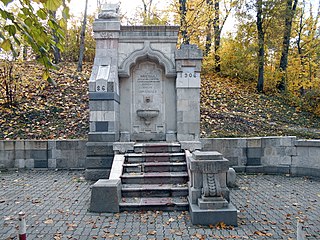
The 1906 Fountain in Carol I Park, in Bucharest, is a monument made in Italian style, from various assortments of marble and granite. The construction has a height of 4.10 m and is made of stone extracted from several quarries in Romania.
76. Palatul Poștelor
The Post Office Palace is a monumental construction located in the old Historic Center of Bucharest, on Calea Victoriei no. 12, currently being the headquarters of the National Museum of Romanian History.
Share
Disclaimer Please be aware of your surroundings and do not enter private property. We are not liable for any damages that occur during the tours.





